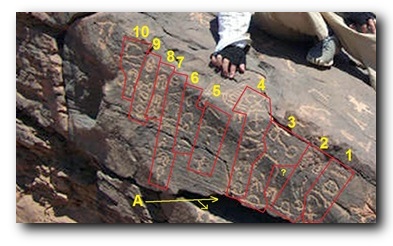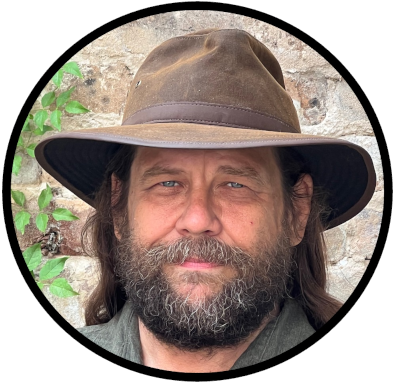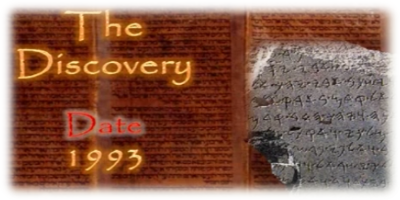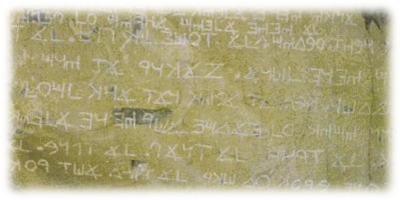In Dr. Kim's travels in NW Saudi Arabia in 2006, the location of the biblical Exodus, he came across this large stone with many inscriptions on it, including a Hebrew Menorah. When the Israelites assembled at Mt. Sinai in Saudi Arabia, God told Moses to make a golden ark, a table, and a Lampstand. The Lampstand what we call a Menorah today - see Ex 25:31-40 "Make a Lampstand of pure gold. Hammer out its base and shaft, and make its flowerlike cups, buds and blossoms of one piece with them. Six branches are to extend from the sides of the Lampstand-three on one side and three on the other. Three cups shaped like almond flowers with buds and blossoms are to be on one branch, three on the next branch, and the same for all six branches extending from the Lampstand. And on the Lampstand there are to be four cups shaped like almond flowers with buds and blossoms. One bud shall be under the first pair of branches extending from the Lampstand, a second bud under the second pair, and a third bud under the third pair-six branches in all. The buds and branches shall all be of one piece with the Lampstand, hammered out of pure gold. "Then make its seven lamps and set them up on it so that they light the space in front of it."
Later on, when the Israelites were wandering over the wilderness of Saudi Arabia, one of them could have carved this menorah inscription in the rock.

In January 2014, Jeff Benner of the Ancient Hebrew Research Center, has made a translation of the inscriptions. "I have been working on the translation of the rock with the Menorah. I am attaching the image with the lines numbered. Also note the "A" at the bottom. It appears that this lower piece had broken off from the upper part and it looks like there is some writing on this lower part that is not visible in the image which could influence how it is translated. But here is what I have been able to translate:"
Line 1: "Stretch out to An" (This may be a place name or it could be a noun meaning iniquity).
Line 2: "From _ _ _d"
Line 3: "Wandering to Ahhad" (This could be a place name or a noun of unknown meaning)
Line 4: "Like {a} maiden of god I will stand" or "Like {a} maiden of Ele standing"
Line 5: "to wander now"
Line 6: "PBD" (Unknown meaning)
Line 7: "And he will build for {a} calf who" (It is difficult to tell if the word is egel or egen. If egel it is calf, but if egen then it is probably a name or a noun of unknown meaning)
Line 8: "To melt" (The word here is MHS which appears to be related to HMS and MSH which both mean to melt. In Exodus 32:4 is the phrase EGL MSKH, meaning molten calf. In this inscription we have LEGL LMHS possibly meaning a "melted calf.")
Line 9: "Tsophen will expire" (compare this name with Ba'al Tzephon, see Exodus 14:2-4)
Line 10: "without bitterness" or "To me {is} bitter"
Putting all of this together we have;
Stretch out to An from ???, Wandering to Ahhad. Like {a} maiden of god I will stand, to wander now ??? and he will build for {a} calf who {is} to melt, Tsophen, will expire without bitterness.
It is interesting to note the biblical keywords associated with Exodus: "wandering, God, molten or melted calf." This co-incides with the altar of the golden calf, and the cow inscriptions found on the altar stones at the base of Mt. Sinai at Jebal al Lawz, Saudi Arabia, which is well documented in photographs in Jim and Penny Caldwell's book, the God of the Mountain; and Lennart Moller's book, the Exodus Case.

Like what you’re discovering? Continue the journey from Bible reader to translator.
|







